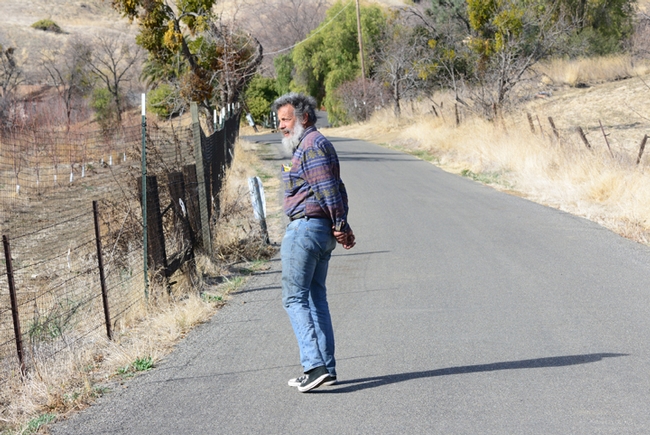- Author: Kathy Keatley Garvey

Enter John Hargrove, director emeritus of the South African Centre for Epidemiological Modelling and Analysis.
He will present a UC Davis Entomology and Nematology seminar on "Tsetse, Trypanosomiasis, and Climate Change: What Can We Learn from Field Data Collected in the Zambezi Valley of Zimbabwe?" at 4:10 p.m. Wednesday, May 3 in 122 Briggs Hall.
His seminar also will be on Zoom:
https://ucdavis.zoom.us/j/95882849672.
Host is UC Davis distinguished professor James R. Carey, UC Davis Department of Entomology and Nematology.
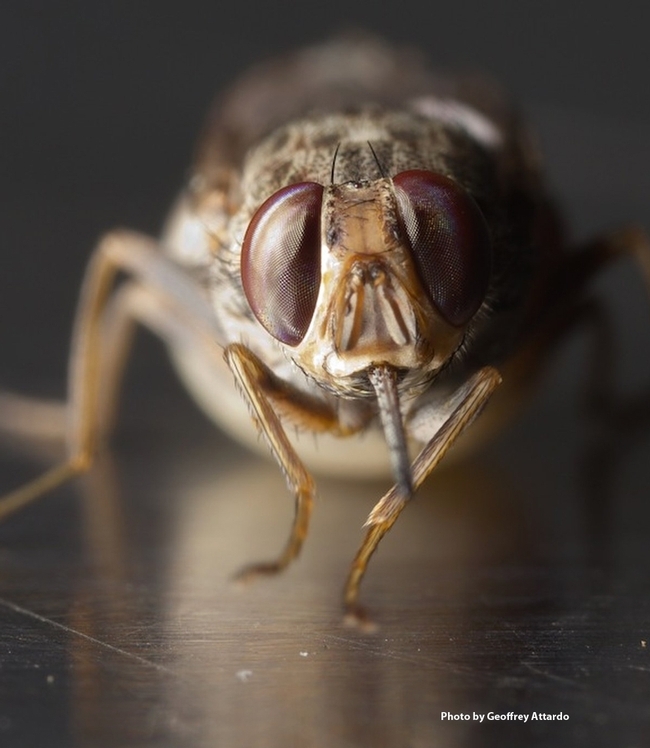
Hargrove, associated with the International Clinics on Infectious Disease Dynamics and Data Program (ICI3D), is a faculty member with the Clinic on Meaningful Modeling of Epidemiological Data (MMED) and the Clinic on Dynamical Approaches to Infectious Disease Data (DAIDD). He is a senior research fellow for the South African Centre for Epidemiological Modelling and Analysis, Stellenbosch University, Stellenbosch, South Africa, and a professor emeritus of mathematical sciences at Stellenbosch University.
Hargrove served as the inaugural director of the South African Centre for Epidemiological Modelling and Analysis (SACEMA). The precursors for MMED and DAIDD were launched in 2006 at the beginning of his directorship; he has been involved continuously as an instructor in the program since, according to his biography on ICI3D. Over the past nearly 50 years, Hargrove has combined fieldwork and mathematical epidemiology to understand the population dynamics and control of tsetse flies, the vectors of human African Trypanosomiasis.
He focuses his current research on the modelling population dynamics, with a particular focus on how increasing temperatures in Africa will affect tsetse distribution. This work involves improving estimation of mortality in adult and immature stages of the fly. Since 1999, he has also focused on the analysis and modelling of data in the world of HIV. Current interest are in improving the use of biomarkers for the accurate estimation of HIV incidence.
He holds a bachelor's degree in zoology (1968) from the University of Oxford; a master's degree in biomathematics (1981) from UCLA, and a doctorate in insect physiology (1973) from the University of London.
Department seminar coordinator is urban landscape entomologist Emily Meineke, assistant professor. For technical issues regarding Zoom connections, she may be reached at ekmeineke@ucdavis.edu. (See complete list of spring seminars.)
Resources:
SERVIR--From Space to Tsetse Fly
World Health Organization: Trypanosomiasis (Human African Sleeping Sickness)
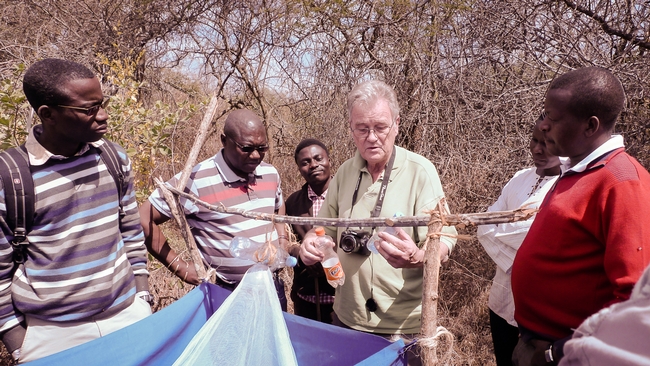
- Author: Kathy Keatley Garvey

Pincebourde, a research director at the National Centre for Scientific Research (CNRS), France, will speak on "The Key Role of Microclimates in Modulating the Response of Ectotherms to Climate Change," at 4:10 p.m. (Pacific Time) on Wednesday, March 15 via Zoom. The Zoom link:
https://ucdavis.zoom.us/j/95882849672
Pincebourde, a research director at the (CNRS), France, says in his abstract: "In a warming world, species may buffer to some extent part of the environmental changes by exploiting the microclimates that are available across space and time. My presentation will focus on the role of the leaf surface microclimate, and in particular temperature, in driving the vulnerability of insects to climate change. I will exemplify the framework we apply to investigate this role. Our approach is deeply rooted into a multidisciplinary background, relying on physics, physiology and ecology of both plant and animal sciences. The microclimatic effects can be quite subtle and mechanistic approaches are fundamentally needed to depict the complexity of the interaction between plant, insect and climate."
On Research Gate, Pincebourde explains that his work "focuses on the role of microclimates in modulating the response of ectotherms (mostly insects) to climate change. I use ecophysiological approaching mostly relying to thermal ecology, connected to the biophysical ecology of organisms. I integrate both temporal and spatial issues of thermal variability. My research has connection with conservation biology by identifying novel or unsuspected interactions between (micro) climates and organisms."
Urban landscape entomologist Emily Meineke, assistant professor with the UC Davis Department of Entomology and Nematology, and coordinator of the department's weekly seminars, will host the seminar and introduce him.
Pincebourde holds a doctorate (2005) from the Institute of Research on Insect Biology (IRBI), France, a joint research unit of the University of Tours and CNRS. He studied for his doctorate with Professor Jérôme Casas. Pincebourde then completed postdoctoral fellowships at the University South Carolina (2006-2007), supervised by Professor Brian Helmuth, and at IRBI (2008-2009), working with Professor Casas's team that studied the ecology of multitropic systems and biomimetism.
Pincebourde joined CNRS as a research scientist, second class, in 2009 and advanced to first class in 2015. Since 2018, he has been in charge of the IRBI's organism-environmental interactions team, known as INOV or the INteractions Organisme-enVironnment.
He has published his work in a number of journals, including Frontiers in Ecology and Evolution, Ecological Monographs, Agriculture and Forest Entomology, Functional Ecology, Journal of Thermal Biology, Biotropica, with papers pending in Global Change Biology and Freshwater Biology. He is a member of the editorial board for American Naturalist.
The UC Davis Department of Entomology and Nematology's winter seminars are held on Wednesdays at 4:10 p.m. in 122 Briggs Hall. (See schedule.) She may be reached at ekmeineke@ucdavis.edu for technical issues.
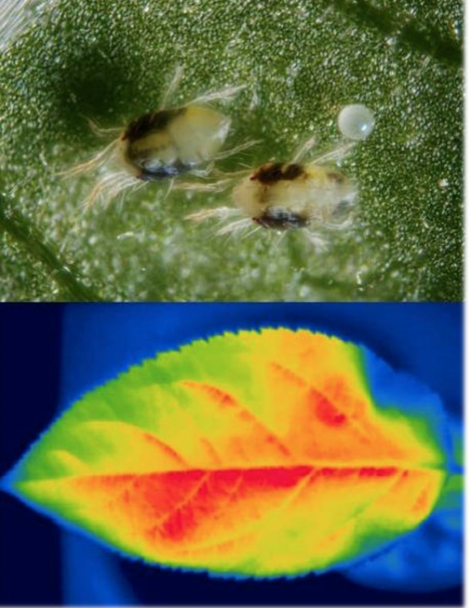
- Author: Kathy Keatley Garvey
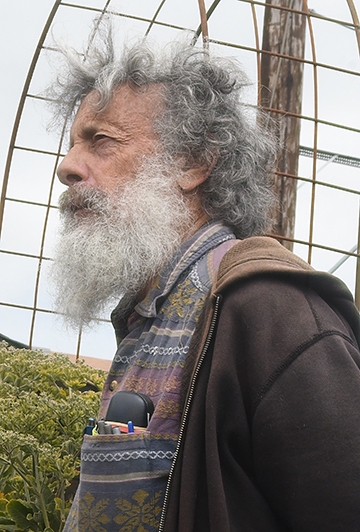
But climate change, aka global warming, may be an equal, if not more, of a factor.
So indicates a 10-member team of scientists, including UC Davis distinguished professor Art Shapiro, Department of Evolution and Ecology, in the March 4th Science journal.
The research article, "Fewer Butterflies Seen by Community Scientists Across the Warming and Drying Landscapes of the American West," sounds a crucial alarm, alerting us to try to find new ways of protecting our fluttering friends.
The abstract:
"Uncertainty remains regarding the role of anthropogenic climate change in declining insect populations, partly because our understanding of biotic response to climate is often complicated by habitat loss and degradation among other compounding stressors. We addressed this challenge by integrating expert and community scientist datasets that include decades of monitoring across more than 70 locations spanning the western United States. We found a 1.6% annual reduction in the number of individual butterflies observed over the past four decades, associated in particular with warming during fall months. The pervasive declines that we report advance our understanding of climate change impacts and suggest that a new approach is needed for butterfly conservation in the region, focused on suites of species with shared habitat or host associations."
Lead author is UC Davis alumnus Matthew "Matt" Forister, the Trevor J. McMinn Endowed Professor in Biology, and Foundation Professor, Department of Biology, University of Nevada. Forister received his doctorate in ecology from UC Davis in 2004.
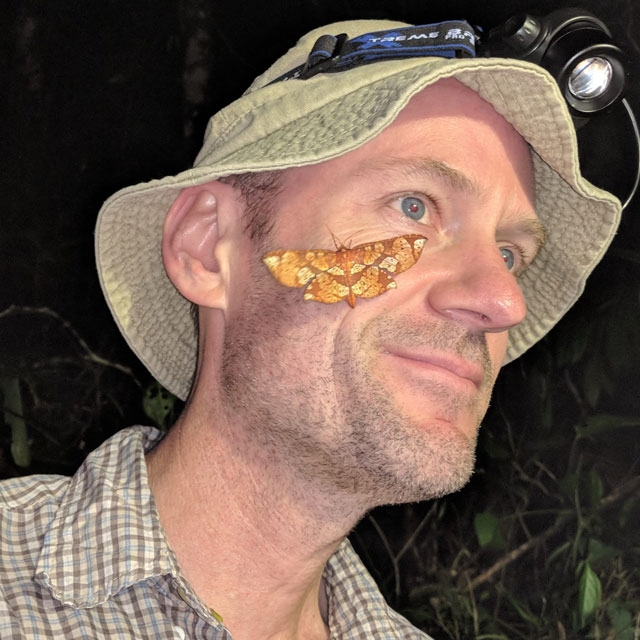
As Pennisi points out, "butterflies are at risk in open spaces, too." She writes: "Art Shapiro, an insect ecologist at the University of California, Davis, and colleagues have shown that over the past 35 years, butterflies are disappearing even in pristine protected areas such as the Sierra Nevada mountain range in the western United States."
"To see whether that finding held up elsewhere, Shapiro and Matthew Forister, an insect ecologist at the University of Nevada, Reno, gathered data from the North American Butterfly Association, which has coordinated community scientist butterfly counts across the United States for more than 42 years. The duo also incorporated 15 years of data from iNaturalist, a web portal that collects sightings of plants and animals, including butterflies. In all, the researchers tracked the fates of 450 butterfly species from 70 locations in the western United States."
The research indicates that the butterfly population in the Western United States has decreased an average of 1.6% per year between 1977 and 2018. "Fifty species declined in at least two of the data sets used, including the Edith's checkerspot (Euphydryas editha), the rural skipper (Ochlodes agricola), and the great copper (Lycaena xanthoides)," Pennisi wrote.
The researchers warn that some species may completely disappear from parts of their ranges in the coming decades, as fall temperatures continue to align with or exceed summer temperatures, impacting breeding cycles and plant dependence.
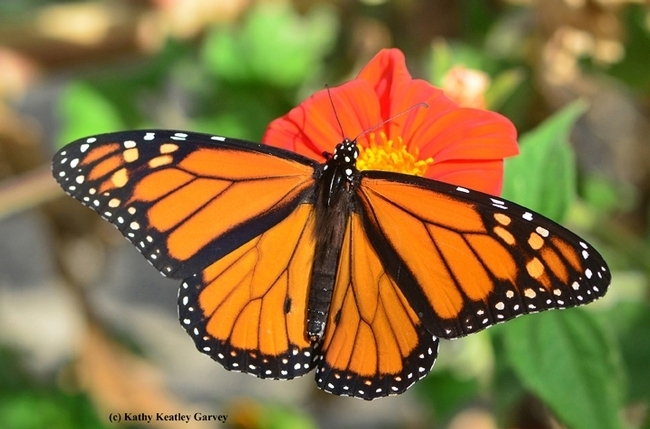
Back in February, 2019, Shapiro told the Environmental Defense Fund's UC Davis meeting on "Recovering the Western Monarch Butterfly Population: Identifying Opportunities for Scaling Monarch Habitat in California's Central Valley," that it's not just monarchs in trouble.
"Monarchs are in trouble in California--but they're hardly alone," Shapiro told the attendees. "If we act as if this is a 'Monarch problem,' we're in danger of missing the real causes of Monarch decline--factors acting at a much broader scale. We've been monitoring entire butterfly faunas--over 150 species--along a transect across California since 1972. Our monitoring sites are matched with climatological data, allowing us to examine statistical relations between climate and butterfly trends. Based on this data set, our group was the first to document and publish evidence of monarch decline here. That's the only reason I'm here."
"At low elevations—below 1000'—entire butterfly faunas have been in long-term decline. We published several papers showing that these declines were about equally correlated with land-use changes and pesticide (especially neonicotinoid) use, with climate change a significant factor but much less important. Remember, these are correlations, not necessarily demonstrations of causation—but they are strongly suggestive. Monarchs were just one of many species going downhill; three once-common species (the Large Marble, Field Crescent and “Common” Sooty-wing) had already gone regionally extinct or nearly so, with others threatening to follow suit."
See more of Shapiro's comments on the March 4, 2019 Bug Squad blog. Read the Science article here.
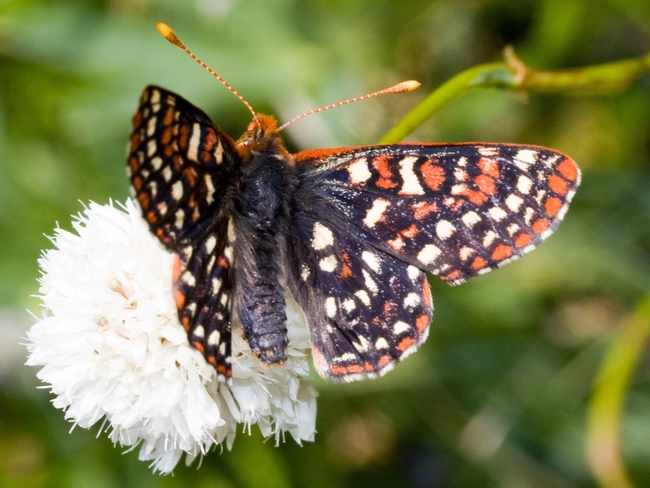
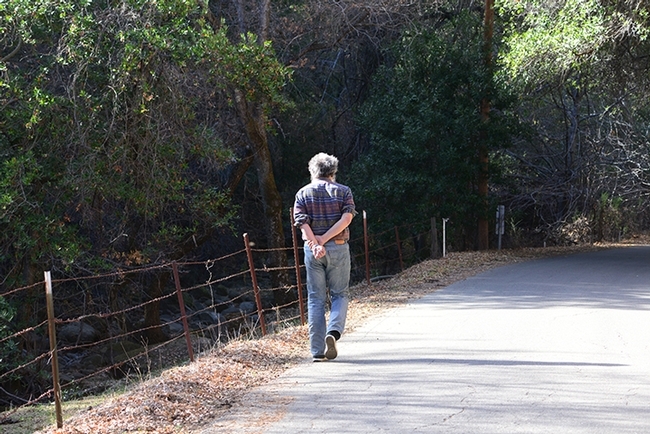
- Author: Kathy Keatley Garvey

Hoffmann, who is known for his advocacy of climate change literacy, leadership activities and biological control projects, received his doctorate in entomology from our department in 1990, studying with Professor Ted Wilson and later Professor Frank Zalom, an integrated pest management specialist and a past president of the Entomological Society of America.
Hoffmann will present the Leigh Distinguished Alumni Seminar on “Our Changing Menu--What Climate Change Means to the Foods We Love and Need,” the title of his upcoming book. The date is pending.
Prior to his retirement, Hoffmann served as executive director of the Cornell Institute for Climate Smart Solutions for several years. He continues to provides visionary leadership, communicates to a wide range of audiences the challenges and opportunities that come with a changing climate, and builds partnerships among public and private organizations.
Hoffmann co-chairs the President's Sustainable Campus Committee and helps lead a climate change literacy initiative for students, staff, and faculty. He dedicates his time toward what he calls “the grand challenge of climate change and (to) help people understand and appreciate what is happening through food.” Effectively communicating about climate change, Hoffmann presented a TEDX talk in 2014 on “Climate Change: It's Time to Raise Our Voices” that drew widespread attention.
Wrote one supporter on YouTube: "The most important thing we can do is "raise our voices"! Thanks for an informative and inspiring talk about the consequences of climate change and why this is the time for action."
A native of Wisconsin, Hoffmann holds a bachelor of science degree (1975) from the University of Wisconsin, and his master's degree from the University of Arizona (1978). He served with the U.S. Marines in Vietnam from 1967 to 1971, attaining the rank of sergeant.
Hoffmann remembers well his experiences at UC Davis. “I was privileged to work with many dedicated faculty in entomology and several other departments.”
After receiving his doctorate at UC Davis, Hoffmann joined the faculty of Cornell in 1990 as an assistant professor, with 60 percent Extension and 40 percent research duties, and advanced to associate professor in 1996, and professor in 2003. His academic career focused on administrative endeavors (80 percent) beginning in 1999.
Hoffmann's career at Cornell included serving as associate dean of the College of Agriculture and Life Sciences, associate director of Cornell Cooperative Extension, director of the Cornell University Agricultural Experiment Station, and director of the New York State Integrated Pest Management Program. He helped initiate a leadership and professional development week-long program that benefited more than 400 faculty at Cornell and beyond.
Prior to his administrative duties, he worked to develop and implement cost-effective and environmentally sensitive tactics for management of insect pests. He emphasized biological control, development and application of insect behavior modifying chemicals, and novel control tactics, all in an integrated pest management (IPM) context. Much of his research and Extension programming was multi-state and multidisciplinary in nature.
Among his entomological achievements, he
- Developed unique, cost-effective and environmentally benign biological control tactics for insect pests of sweet corn, peppers and potatoes, and presented wide scale demonstrations on conventional and organic farms in New York, Virginia, Massachusetts and Canada.
- Published the first popular guide to beneficial insects (64 pages, with more than 5,000 copies distributed)
- Developed patented unique fiber barrier technology for pest control
Highly honored for his expertise, Hoffmann was selected the recipient of the Experiment Station Section Award for Excellence in Leadership in 2015. He won an Entomological Foundational Professional award for Excellence in Integrated Pest management, Entomological Society of America, Eastern Branch, in 2006. He created a one-of-a-kind culture of sustainability at the Cornell University Agricultural Experiment Station focused on reducing the carbon footprints and costs, and ensuring staff well-being. He helped initiate a leadership and professional development week-long program that has benefited more than 400 faculty at Cornell and beyond.
Hoffmann authored more than 100 refereed publications, mostly related to entomology.
The Leigh seminar memorializes cotton entomologist Thomas Frances Leigh (1923-1993), an international authority on the biology, ecology and management of arthropod pests affecting cotton production. During his 37-year UC Davis career, Leigh was based at the Shafter Research and Extension Center, also known as the U.S. Cotton Research Station. He researched pest and beneficial arthropod management in cotton fields, and host plant resistance in cotton to insects, mites, nematodes and diseases. In his memory, his family and associates set up the Leigh Distinguished Alumni Seminar Entomology Fund at the UC Davis Department of Entomology. When his wife, Nina, passed in 2002, the alumni seminar became known as the Thomas and Nina Distinguished Alumni Seminar.
Leigh joined the UC Davis Department of Entomology in 1958, retiring in 1991 as an emeritus professor, but he continued to remain active in his research and collaboration until his death on Oct. 26, 1993. The Pacific Branch of the Entomological Society of America awarded him the C. F. Woodworth Award for outstanding service to entomology in 1991.
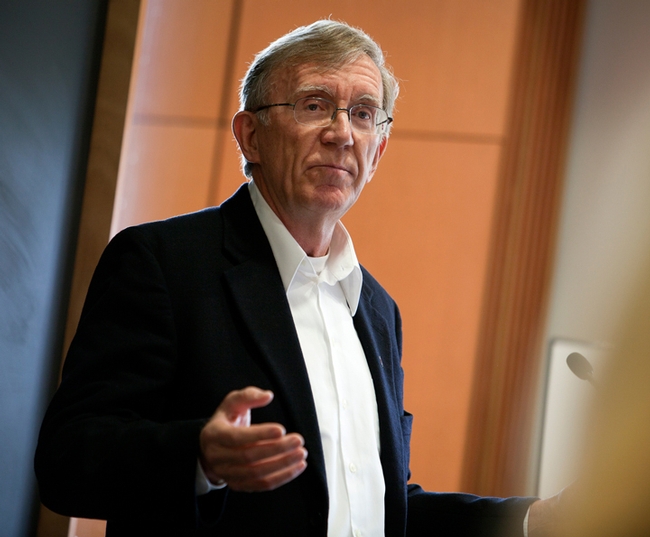
- Author: Kathy Keatley Garvey
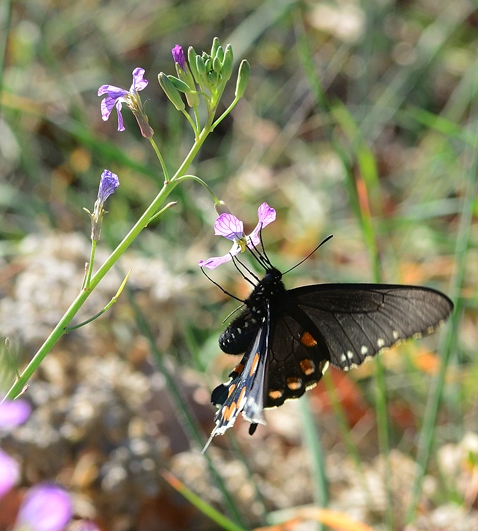
Newly published research examining more than four decades of data collected in central California by Art Shapiro, UC Davis distinguished professor of evolution and ecology, clearly reveals the effect: a marked difference between how butterfly populations fared at low and high elevations.
It's basically good news for the valley or low-elevation butterflies and bad news for the mountain or high-elevation butterflies.
The research, "Impacts of Millennium Drought on Butterfly Faunal Dynamics," is published in the journal Climatic Change Responses.
Lead author Matthew Forister, a biology professor at the University of Nevada, Reno, is a former Ph.D. student of Art Shapiro's, as are two co-authors James Fordyce of the University of Tennessee, Knoxville, and Chris Nice of Texas State University, San Marcos. UC Davis co-authors, besides Shapiro, are James Thorne and David Waetjen of the UC Davis Department of Environmental Science and Policy.
The six-member team analyzed the data in Shapiro's 10-study site dataset, which dates back to 1972 and encompasses 163 butterfly species. The sites, representing what Shapiro calls the "great biological, geological and climatological diversity of central California," range from the Sacramento River delta, through the Sacramento Valley and Sierra Nevada mountains, to the high desert of the western Great Basin. See his research website. Shapiro walked the study sites every two weeks between 45 and 29 years, noting the presence or absence of all butterfly species. (He still does. Of course, he walks during what he calls "good butterfly weather," when conditions are suitable for insect flight. This is nearly year-around at low elevations but understandable, there's a more narrow period at higher elevations.)

Of the research paper, Professor Shapiro said: "This is the most important contribution from our research group in a while. It documents the responses of entire butterfly faunas to the recent California drought. It demonstrates that, counter to intuition, butterfly faunas near sea level apparently benefited from the drought, temporarily reversing long-term declines, while montane Sierran faunas were severely harmed...the study has broader implications for the biological impacts of climate change."
Bottom line: Climate change, aka global warming, is real. Wikipedia describes it as "the observed century-scale rise in the average temperature of the Earth's climate system and its related effects. Multiple lines of scientific evidence show that the climate system is warming." Indeed, we should all be concerned with the increasing severity and frequency of extreme weather events, such as drought, and the challenges that plant and animal life face.
"Despite ongoing political controversy swirling around climate change, the vast majority of scientists dealing with the subject have no doubt that it is occurring and that its ecological implications are profound," Shapiro told us today. "One way to address potential long-term impacts of climate change on living things is to examine in detail how they are reacting to shorter-term climatic events, especially climatic extremes. The recent 'millennia'-scale California drought affords just such an opportunity. We have been monitoring entire butterfly faunas along the I-80 corridor in California for many years (in some cases way back to the early 1970s), so we have a huge baseline for comparison to data from the drought years. There are very few comparably continuous and extensive data sets on any group of organisms world-wide. As we explain, butterflies reacted to the drought in mostly unexpected and 'counterintuitive' ways. By trying to understand those reactions, we can approach longer-term trends in a much more sophisticated way. Or so we think."
Read the research paper here and learn how the scientists compiled the statistics and obtained the results.
